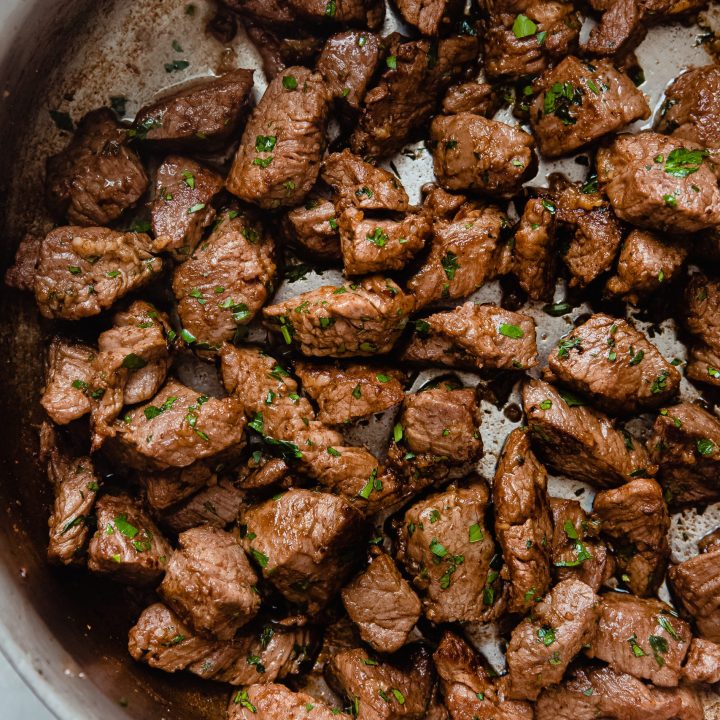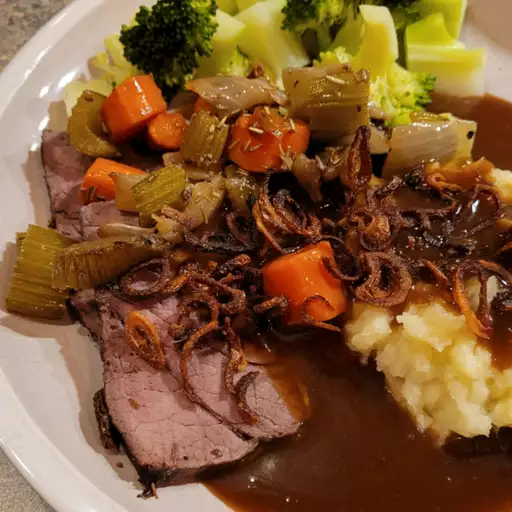Greek Moussaka

My Cozy Kitchen Memories with Greek Moussaka
There’s something about Greek moussaka that always transports me right back to a sun-drenched kitchen in late summer, the air smelling softly of cinnamon and sizzling olive oil. I first fell in love with this traditional dish during a family vacation in the Greek islands—think bustling markets with glistening eggplants piled high, the warmth of hospitality, laughter bouncing off the kitchen walls, and that first magical forkful around a crowded table. Greek moussaka isn’t just hearty comfort food; for me, it’s the taste of togetherness and nostalgia (and, honestly, a bit of kitchen heroism).
If you’ve ever wanted to bring a little Mediterranean warmth straight to your dinner table, let’s dive into how easy and rewarding homemade Greek moussaka can be. Whether you’re a moussaka veteran or this is your very first try at the classic Greek casserole, I can’t wait to walk you through each delicious, cozy step.
Why You’ll Adore This Greek Moussaka
Let’s be real—Greek moussaka is classic comfort on a plate. Here’s why it’ll instantly win you over:
- Layered Comfort: Each bite is a glorious marriage of silky eggplant, hearty potatoes, rich meat sauce, and dreamy béchamel. It’s the ultimate in Mediterranean casseroles!
- Perfect for Gathering: This dish just begs to be shared (hello, big family dinners or romantic date nights at home).
- Incredible Flavors: There’s that special cinnamon-and-oregano kick—zingy, warming, and totally unique to traditional Greek moussaka recipes.
- Make-Ahead Friendly: Prep it the night before, pop it in the fridge, and simply bake when you’re ready (leftovers the next day are somehow even better).
Honestly, this isn’t just an easy Greek moussaka recipe; it’s a whole vibe. And you deserve to experience it!
Ingredients You’ll Need for Greek Moussaka
Let’s talk what goes into this legendary Greek casserole and why each ingredient matters:
- 2 medium eggplants – Look for glossy, firm ones (not too seedy). If you’re new to eggplant, salting helps keep them creamy, not bitter.
- 2 medium potatoes – I prefer waxy potatoes because they hold their shape beautifully, adding body to your moussaka layers.
- 500g ground beef or lamb – Both make for a classic meat sauce. Lamb offers a slightly richer, earthier flavor.
- 1 onion, chopped & 2 garlic cloves, minced – These aromatics are the heart of your meat sauce.
- 400g canned tomatoes, chopped & 2 tbsp tomato paste – Use the best-tasting canned tomatoes you can afford; they bring depth and tang.
- 1 tsp cinnamon & 1 tsp oregano – Trust me, don’t skip this! Authentic moussaka flavor leans on these warm spices.
- Salt and pepper to taste – Essential for bringing out all those flavors.
- 3 cups béchamel sauce – That dreamy, creamy topping. Homemade is best, but store-bought can save you time in a pinch.
- 1 cup grated cheese (like Parmesan or Kefalotyri) – The cheesy top makes the casserole irresistible.
- Olive oil – For frying the veggies and sautéing everything to perfection.
This might look like a lot, but every ingredient plays its part to create that layered, distinctly Greek comfort food magic.
Step-by-Step Guide: Making the Perfect Greek Moussaka
Let’s make this easy Greek moussaka together! Here’s how I do it (with all the reassurance, because you’ve got this):
- Preheat & Prep: Set your oven to 180°C (350°F). Line up your sliced eggplants and potatoes. Sprinkle with salt and let them sit for about 20 minutes to draw out any bitterness (this also helps the eggplant absorb less oil). Rinse and pat them dry.
- Meat Sauce Time: In a large skillet, heat a drizzle of olive oil. Sauté your chopped onion and minced garlic until fragrant and softened. Add your ground beef or lamb, and break it up with a spoon as it browns.
- Add Tomatoes & Spice: Stir in the canned tomatoes, tomato paste, cinnamon, oregano, salt, and pepper. Simmer gently for about 15 minutes, letting the sauce thicken. I always taste and adjust for balance (sometimes a pinch more cinnamon makes all the difference).
- Fry the Veggies: In another skillet, heat olive oil and fry your eggplant slices until golden on both sides. Do the same for the potatoes. Arrange on paper towels to blot away any excess oil.
- Layer It Up: Lightly oil a baking dish. Start with potatoes, then layer on the eggplant, then all that saucy, savory meat mixture.
- Top & Bake: Pour your béchamel sauce generously over the top, making a silky blanket. Sprinkle with grated cheese (go wild here—I always do). Bake for 45 minutes, or until bubbly and golden.
- Cool & Serve: This is the hardest part—wait at least 10–15 minutes before cutting in. Moussaka firms up as it cools, making it so much easier to serve those beautiful layers.
Take your time and enjoy the process! The kitchen will smell heavenly.
My Secret Tips and Tricks for Greek Moussaka Success
Over the years, I’ve stumbled on a few tricks that make homemade Greek moussaka next-level:
- Salt Your Eggplant: Never skip this step. It keeps the eggplant creamy, not soggy. (Classic comfort food hack!)
- Use Lamb for Authenticity: If you want true Mediterranean vibes, ground lamb is my go-to. But beef works great for an easy, crowd-pleasing moussaka.
- Let It Rest: Like lasagna, Greek moussaka cuts best when it’s had time to cool—this keeps your layers neat and your presentation Pinterest-worthy.
- A Little Extra Cheese: Okay, confession: I add a bit more cheese than most recipes call for. That golden, cheesy crust is everything!
And remember—homemade Greek moussaka isn’t about stress or perfection. It’s about love (and leftovers).
Creative Variations and Ingredient Swaps
You know me—I love a classic, but I’m also all for playing with tradition:
- Vegetarian Greek Moussaka: Swap the ground meat for a rich lentil and mushroom filling (it’s just as hearty).
- Lighter Version: Instead of frying, brush your eggplant and potatoes with olive oil and roast or grill ’em.
- Low-Carb Greek Moussaka: Skip the potatoes and just double up on eggplant. Still all the flavor!
- Béchamel Shortcut: Use store-bought béchamel sauce if you’re short on time (no judgment!).
- Cheese Swap: Kefalotyri is incredible but hard to find outside Greece—Parmesan, Pecorino, or even Gruyère work in a pinch.
Basically, Greek moussaka is the perfect Mediterranean casserole to make your own. (And that’s half the fun.)
How to Serve and Store Your Greek Moussaka
Serving up Greek moussaka at home? Here’s how I keep meals stress-free:
- Serving: Pair big, satisfying squares with a crisp Greek salad, a lemon wedge, and warm pita bread. It’s a knockout main for dinner parties or chilly nights in.
- Storing Leftovers: Let the casserole cool completely, then cover tightly or transfer to airtight containers. Greek moussaka stays fresh in the fridge for up to 3 days (honestly, the flavors deepen by day two—so good for lunches!).
- Reheating: Warm in a 180°C oven until heated through, or zap individual portions in the microwave.
- Freezing: Wrap portions tightly and freeze for up to two months. Thaw overnight and reheat as above.
Make-ahead Mediterranean casserole? Yes, please!
FAQs: Your Top Questions About Greek Moussaka Answered
1. Can I make Greek moussaka ahead of time?
Absolutely! Assemble the casserole, cover, and refrigerate up to 24 hours before baking. Or bake completely, cool, and reheat for hands-off entertaining.
2. What’s the best meat for authentic Greek moussaka?
Lamb is traditional and really shines in classic Greek recipes, but ground beef makes for a lighter, just-as-delicious version.
3. Can I use zucchini instead of eggplant?
Yes! Zucchini is a popular variation—just slice and cook the same way as eggplant for a fresher twist.
4. How do I keep moussaka from falling apart when serving?
Patience! Let it rest 10–15 minutes after baking before slicing. This stabilizes those gorgeous layers.
5. Is there a gluten-free way to make the béchamel sauce?
Totally—just use gluten-free flour or cornstarch in your béchamel. All the creamy comfort, none of the gluten worries.
So there you have it: my favorite Greek moussaka recipe, packed with memories, flavor, and a few easy tricks. I hope it brings delicious warmth and a sense of celebration to your kitchen, just like it does to mine. If you try it (and I hope you do!), let me know how it turned out. Here’s to cozy nights and Mediterranean comfort food—enjoy!
Greek Moussaka
Ingredients
Vegetables
- 2 medium eggplants Look for glossy, firm ones. Salting helps keep them creamy.
- 2 medium potatoes Waxy potatoes hold their shape well.
Meat sauce ingredients
- 500 g ground beef or lamb Lamb offers a richer flavor, but beef works great.
- 1 medium onion, chopped Essential aromatics for the sauce.
- 2 cloves garlic, minced Essential aromatics for the sauce.
- 400 g canned tomatoes, chopped Use the best-tasting canned tomatoes for depth.
- 2 tbsp tomato paste Enhances the meat sauce flavor.
- 1 tsp cinnamon Adds warmth and authenticity.
- 1 tsp oregano Key herb for traditional flavor.
- to taste salt and pepper Essential for enhancing flavors.
Béchamel and Cheese
- 3 cups béchamel sauce Homemade is best, store-bought can save time.
- 1 cup grated cheese Parmesan or Kefalotyri is recommended.
Cooking essentials
- 2 tbsp olive oil For frying the veggies and sautéing.
Instructions
Preparation
- Preheat your oven to 180°C (350°F). Slice the eggplants and potatoes, sprinkle with salt, and let them sit for about 20 minutes to draw out bitterness. Rinse and pat dry.
Meat Sauce Cooking
- In a large skillet, heat a drizzle of olive oil. Sauté chopped onion and minced garlic until fragrant.
- Add ground beef or lamb, breaking it up with a spoon as it browns.
- Stir in canned tomatoes, tomato paste, cinnamon, oregano, salt, and pepper. Simmer for about 15 minutes to thicken.
Frying Vegetables
- In another skillet, heat olive oil and fry eggplant slices until golden on both sides. Do the same for potatoes.
- Arrange fried vegetables on paper towels to blot excess oil.
Layering and Baking
- Lightly oil a baking dish. Layer potatoes, then eggplant, then meat sauce.
- Pour béchamel sauce generously on top, sprinkle with grated cheese.
- Bake for 45 minutes, or until bubbly and golden.
Cooling and Serving
- Let moussaka rest for 10–15 minutes before cutting to keep layers intact.





